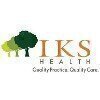Medical Coder
500+ Medical Coder Interview Questions and Answers

Asked in Episource

Q. Any one respiratory disease name and which drugs is used
Asthma is a common respiratory disease treated with bronchodilators and corticosteroids.
Asthma is a chronic condition that causes inflammation and narrowing of the airways.
Bronchodilators like albuterol are used to relax the muscles around the airways and improve breathing.
Corticosteroids like fluticasone are used to reduce inflammation in the airways and prevent asthma attacks.
Other respiratory diseases include chronic obstructive pulmonary disease (COPD) and pneumonia.
COPD ...read more

Asked in Omega Healthcare

Q. If a patient presents with abdominal pain and complaints, with a final impression of gastroenteritis and confirmed sepsis, how would you order the ICD codes?
Assign ICD codes for a patient with abdominal pain, gastroenteritis, and sepsis.
Assign the primary diagnosis code for sepsis (A41.9)
Assign the secondary diagnosis code for gastroenteritis (K52.9)
Assign additional codes for any other relevant conditions or symptoms
Sequence the codes in order of importance, with the primary diagnosis listed first
Medical Coder Interview Questions and Answers for Freshers

Asked in Omega Healthcare

Q. How many body systems in human body? Explain any one
There are 11 body systems in the human body. The respiratory system is responsible for breathing and gas exchange.
There are 11 body systems in the human body, including the respiratory, circulatory, nervous, digestive, and skeletal systems.
The respiratory system is responsible for breathing and gas exchange, allowing oxygen to enter the body and carbon dioxide to exit.
Other systems include the cardiovascular system, which pumps blood throughout the body, and the endocrine sys...read more

Asked in Omega Healthcare

Q. When coding a laceration repair, what are the key components to consider when selecting the appropriate CPT code?
Key components to code laceration repair cpt code
Location of the laceration
Length of the laceration
Depth of the laceration
Number of layers repaired
Type of closure used
Anesthesia used
Any complications
Example: CPT code 12001 for simple repair of a laceration on the arm that is 2.5 cm in length and required 2 layers of closure

Asked in Advantmed

Q. How many systems are in the human body, and what are they?
There are 11 systems in the human body.
Circulatory system (heart, blood vessels)
Respiratory system (lungs, airways)
Digestive system (stomach, intestines)
Nervous system (brain, spinal cord, nerves)
Muscular system (muscles)
Skeletal system (bones)
Endocrine system (glands, hormones)
Immune system (organs, cells, tissues)
Integumentary system (skin, hair, nails)
Urinary system (kidneys, bladder)
Reproductive system (male and female)

Asked in XL Health

Q. What is HCC ?? INPATIENT GUIDELINES ?? ACUTE CONDITIONS? CVA ,MI , fracture when u will code??
HCC stands for Hierarchical Condition Category, a system used to predict healthcare costs and reimbursements.
HCC is used by Medicare Advantage plans to determine payment rates for beneficiaries.
It is based on the patient's medical conditions and demographic information.
Inpatient guidelines refer to the rules and regulations for coding medical procedures and diagnoses for patients who require hospitalization.
Acute conditions are illnesses or injuries that are severe and sudden...read more
Medical Coder Jobs




Asked in Episource

Q. What type of blood flows in arteries and veins?
Arteries carry oxygenated blood away from the heart, while veins carry deoxygenated blood back to the heart.
Arteries have thicker walls and are more elastic than veins.
Veins have valves to prevent backflow of blood.
Examples of arteries include the aorta and pulmonary artery, while examples of veins include the superior and inferior vena cava.
Blood flow in arteries is pulsatile due to the pumping action of the heart, while blood flow in veins is steady and slower.

Asked in XL Health

Q. What is rx HCC?? What is chronic and permanent condition? 2022 ICD 10cm guidelines and 2021 to 2022 changes ?? And based on ur education background some info? Basic medical anatomy and physiology Medical termin...
read moreRx HCC is a risk adjustment model used to predict healthcare costs for Medicare Advantage patients.
Rx HCC stands for Risk Adjustment Hierarchical Condition Categories
It is used to predict healthcare costs for Medicare Advantage patients based on their chronic and permanent conditions
Chronic and permanent conditions are those that are expected to last for at least a year or until the patient's death
2022 ICD 10cm guidelines include new codes for COVID-19 and vaping-related diso...read more
Share interview questions and help millions of jobseekers 🌟


Asked in Episource

Q. Explain the anatomy and physiology of one organ system.
The cardiovascular system is responsible for circulating blood throughout the body.
The heart is the main organ of the cardiovascular system and pumps blood through the blood vessels.
Blood vessels include arteries, veins, and capillaries.
Arteries carry oxygenated blood away from the heart to the rest of the body.
Veins carry deoxygenated blood back to the heart.
Capillaries are the smallest blood vessels and allow for the exchange of nutrients and waste products between the bloo...read more

Asked in Omega Healthcare

Q. Digestive system who was used in department of medical science
The digestive system is a vital part of the medical science department, responsible for breaking down food and absorbing nutrients.
The digestive system includes organs such as the stomach, intestines, liver, and pancreas.
Medical coders must have a thorough understanding of the digestive system in order to accurately code procedures and diagnoses related to this area.
Examples of digestive system-related codes include those for gastroenteritis, inflammatory bowel disease, and c...read more

Asked in Omega Healthcare

Q. What is ICD? What is cpt? Explain about pathology? Tell me about how many system present the body? What is mean by include and exclude? Combo code? Sepsis ICD guidelines?
ICD and CPT are medical coding systems used to classify diseases and medical procedures respectively. Pathology is the study of diseases.
ICD stands for International Classification of Diseases and is used to classify diseases and medical conditions.
CPT stands for Current Procedural Terminology and is used to classify medical procedures and services.
Pathology is the study of diseases and their causes, processes, and effects.
The human body has 11 major systems, including the ca...read more

Asked in CorroHealth infotech

Q. What do you understand by Neoplasm and its types?
Neoplasm is an abnormal growth of cells, which can be benign or malignant.
Neoplasm is commonly known as a tumor.
Benign neoplasms are non-cancerous and do not spread to other parts of the body.
Malignant neoplasms are cancerous and can invade nearby tissues and spread to other parts of the body.
Types of neoplasms include adenomas, carcinomas, sarcomas, and lymphomas.
Neoplasms can occur in various organs and tissues of the body.

Asked in Episource

Q. How many lobes are in the lungs?
There are five lobes in the lungs, three in the right lung and two in the left lung.
The right lung has three lobes: upper, middle, and lower lobes.
The left lung has two lobes: upper and lower lobes.
Each lobe is further divided into smaller segments called bronchopulmonary segments.
The lobes are responsible for the exchange of oxygen and carbon dioxide during respiration.
Lung lobes can be affected by various diseases such as pneumonia, lung cancer, and tuberculosis.

Asked in Episource

Q. What is the function of the bones in the ear, and what are they?
Bones in the ear are essential for hearing and maintaining balance.
The bones in the ear are called the ossicles.
They consist of the malleus (hammer), incus (anvil), and stapes (stirrup).
These bones transmit sound vibrations from the eardrum to the inner ear.
They amplify the sound and help in the process of hearing.
The ossicles also play a role in maintaining balance by detecting head movements.

Asked in Episource

Q. What is the name of the shortest bone in the human body?
The name of the shortest bone is the stapes.
The stapes is located in the middle ear.
It is also known as the stirrup bone.
It measures only 2-3mm in length.
It is one of the three ossicles in the ear that transmit sound vibrations to the inner ear.

Asked in Omega Healthcare

Q. How many lobes are in the right and left lungs?
The right lung has three lobes and the left lung has two lobes.
The right lung is larger and has more lobes than the left lung.
Each lobe is further divided into smaller segments called bronchopulmonary segments.
The lobes of the lungs are responsible for the exchange of oxygen and carbon dioxide during respiration.
The lobes of the lungs can be affected by various diseases such as pneumonia, lung cancer, and tuberculosis.

Asked in Episource

Q. What personal information on a resume do you cross-check?
Personal info resume cross check is a process of verifying the accuracy of personal information provided in a resume.
It involves verifying the candidate's name, contact details, educational qualifications, work experience, and other personal information.
This process helps to ensure that the information provided by the candidate is accurate and truthful.
Employers may use various methods to cross-check the information, such as contacting references, conducting background checks...read more
Asked in ATutor

Q. Do you have any technical certifications? How many programming languages do you know? What are the different types of OS you are comfortable working with? What is the extent of your technical expertise
I have technical certifications in medical coding and am proficient in various programming languages and operating systems.
I am certified in medical coding through AAPC or AHIMA.
I am proficient in programming languages such as Java, Python, and SQL.
I am comfortable working with various operating systems such as Windows, Linux, and MacOS.
My technical expertise includes medical coding, data analysis, and software development.

Asked in GeBBS Healthcare Solutions

Q. What is the circulatory system. Composition of blood
The circulatory system is responsible for transporting blood throughout the body. Blood is composed of plasma, red and white blood cells, and platelets.
The circulatory system includes the heart, blood vessels, and blood.
Blood carries oxygen and nutrients to the body's tissues and removes waste products.
Plasma is the liquid component of blood and makes up about 55% of its volume.
Red blood cells contain hemoglobin, which binds to oxygen and gives blood its red color.
White blood...read more

Asked in Episource

Q. Q.3 Describe brief endocrine system ,digestive system and cardiovascular system and their parts ,treatment and medication
The endocrine system regulates hormones, the digestive system processes food, and the cardiovascular system circulates blood.
The endocrine system includes glands such as the pituitary, thyroid, and adrenal glands, which produce hormones that regulate bodily functions.
The digestive system includes organs such as the stomach, small intestine, and colon, which break down food and absorb nutrients.
The cardiovascular system includes the heart, blood vessels, and blood, which circu...read more

Asked in IKS Health

Q. Talk about the coding process.how i know coding what codes give injury, fractures. What about my self.
The coding process involves assigning codes to medical diagnoses and procedures for billing purposes.
Medical coders use standardized code sets such as ICD-10-CM and CPT to accurately code medical records.
Injuries and fractures are coded using specific codes based on the location and severity of the injury.
To become proficient in coding, one must complete a medical coding program and gain experience in the field.
Self-coding is not recommended as it can lead to errors and incor...read more

Asked in Episource

Q. What is the name of the longest bone in the human body?
The femur is the longest bone in the human body.
The femur is located in the thigh and extends from the hip to the knee.
It is also the strongest bone in the body.
The femur is essential for walking, running, and other weight-bearing activities.
In medical coding, knowledge of bone anatomy is important for accurate coding of fractures and other injuries.

Asked in Omega Healthcare

Q. What is important topic in anatomy
An important topic in anatomy is the study of the human body's structure and function.
Understanding the different systems of the body such as the skeletal, muscular, and nervous systems
Knowledge of anatomical terminology and directional terms
Familiarity with the organs and their functions
Awareness of common anatomical variations and abnormalities
Ability to identify and differentiate between different types of tissues

Asked in Episource

Q. What is medical coding?
Coding in medical field refers to the process of assigning specific codes to medical diagnoses, procedures, and services.
Coding is essential for accurate medical billing and reimbursement.
Medical coders use various coding systems such as ICD-10, CPT, and HCPCS.
Codes provide standardized information about patient conditions, treatments, and healthcare services.
Examples of codes include ICD-10-CM code for diabetes (E11.9) and CPT code for a routine office visit (99213).

Asked in Episource

Q. What is the name of the jaw bone?
The name of the jaw bone is mandible.
The mandible is the largest and strongest bone in the face.
It is the only movable bone in the skull.
It articulates with the temporal bone to form the temporomandibular joint (TMJ).

Asked in Advantmed

Q. 2 types that are type 1 (insulin dependent )and type 2(insuline independent ) drug are metformin, acarbose, glipizide, glimepride, glyburide, meglitol, ect.
Type 1 (insulin dependent) and type 2 (insulin independent) are two types of diabetes. Some drugs used for type 2 diabetes include metformin, acarbose, glipizide, glimepride, glyburide, and meglitol.
Type 1 diabetes requires insulin for treatment.
Type 2 diabetes can be managed with oral medications.
Metformin is commonly prescribed for type 2 diabetes.
Acarbose helps control blood sugar levels by slowing down the digestion of carbohydrates.
Glipizide, glimepride, and glyburide st...read more

Asked in Omega Healthcare

Q. Explain how the cardiovascular system functions in our body.
The cardiovascular system is responsible for circulating blood throughout the body, delivering oxygen and nutrients to cells and removing waste products.
The heart pumps blood through a network of blood vessels, including arteries, veins, and capillaries.
Arteries carry oxygenated blood away from the heart to the rest of the body, while veins carry deoxygenated blood back to the heart.
Capillaries are tiny blood vessels that connect arteries and veins, allowing for the exchange ...read more

Asked in PhyCARE Solutions

Q. Tell me about the number of organ systems in the human body.
There are 11 organ systems in the human body.
The organ systems include the circulatory system, respiratory system, digestive system, nervous system, etc.
Each organ system is made up of specific organs and tissues that work together to perform a particular function.
For example, the circulatory system includes the heart, blood vessels, and blood, and its function is to transport oxygen and nutrients throughout the body.

Asked in CorroHealth infotech

Q. How many layers does the skin have, and what are their names?
The skin has three main layers: epidermis, dermis, and subcutaneous tissue.
The epidermis is the outermost layer of skin and is responsible for protecting the body from the environment.
The dermis is the middle layer of skin and contains hair follicles, sweat glands, and blood vessels.
The subcutaneous tissue is the deepest layer of skin and is made up of fat and connective tissue.
Other structures found in the skin include nerves, lymphatic vessels, and muscle fibers.
Skin layers...read more

Asked in Omega Healthcare

Q. Patient condition before disease and after disease
Patient condition before and after disease refers to the state of health of the patient prior to and after the onset of the disease.
Before disease: patient was healthy and had no symptoms
After disease: patient experienced symptoms and may have had a decline in health
Example: Before disease, patient had normal blood pressure and no signs of diabetes. After disease, patient had high blood pressure and was diagnosed with type 2 diabetes.
Interview Questions of Similar Designations
Interview Experiences of Popular Companies





Top Interview Questions for Medical Coder Related Skills



Reviews
Interviews
Salaries
Users

















